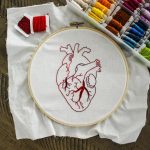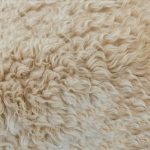When considering fabrics for compression garments, you're likely looking for materials that offer a balance of comfort, support, and durability. Poly tricot fabric, with its smooth surface and moisture-wicking properties, has garnered attention for its potential use in compression garments. But can it truly deliver the necessary level of compression and support for applications like athletic wear or medical-grade therapy? As you explore the possibility of using poly tricot for compression garments, you'll want to examine its stretch and recovery properties, pressure profile, and how it compares to other fabrics on the market.
Table of Contents
Understanding Poly Tricot Fabric
Poly tricot fabric is a top choice for compression garments, offering a unique blend of properties that make it well-suited for a range of applications. It is a type of knit fabric made from polyester, which provides excellent durability and resistance to wrinkles.
Its tricot knit construction gives it a smooth, soft surface that's gentle on skin, making it ideal for garments that require a snug fit.
Poly tricot fabric is also easy to care for, as it can be machine washed and dried without losing its shape or elasticity.
It's a great choice for activewear and compression garments because it's breathable and moisture-wicking, helping to keep you cool and dry during exercise.
When designing or selecting compression garments, poly tricot fabric is worth considering due to its versatility and performance. Understanding the properties and benefits of poly tricot can help make informed decisions about compression garment needs.
Characteristics of Compression Garments
When you're looking for compression garments that meet your needs, you'll want to consider several key characteristics that impact their performance. You'll need to think about the fabric's ability to stretch and recover.
The pressure gradient levels provide the right amount of compression for your specific use.
Additionally, you'll want to consider the moisture-wicking properties that keep you dry and comfortable during wear.
Fabric Stretch and Recovery
Considering the unique demands of compression garments, fabric stretch and recovery are critical characteristics that directly impact the wearer's comfort, mobility, and overall effectiveness of the garment. You need a fabric that can stretch to accommodate movement, yet recover quickly to maintain compression levels.
If the fabric is too rigid, it can restrict movement and cause discomfort. On the other hand, if it's too loose, it can lose its compression properties.
When evaluating fabrics for compression garments, you should look for materials with a high degree of elasticity. This allows the fabric to stretch with the wearer's movements, providing a full range of motion without compromising compression.
The fabric should also have good recovery properties, meaning it can snap back into shape quickly after stretching. This ensures that the garment maintains its compression levels throughout the day.
Pressure Gradient Levels
Most compression garments are designed with specific pressure gradient levels, which refer to the amount of pressure applied to the skin at different points along the garment, typically decreasing from the extremities towards the core.
When you wear compression garments, you'll notice that the pressure is greatest at the ankle or wrist, and gradually decreases as you move up the leg or arm. This gradient is designed to improve blood flow and reduce swelling by helping your body's natural circulatory system.
When considering a fabric for compression garments, it's essential to think about how it will provide the right pressure gradient levels.
You'll want a fabric that can maintain consistent pressure across different areas of the body.
Poly tricot, with its smooth, stretchy surface, can help achieve this. However, the actual pressure gradient levels will depend on various factors, including the fabric's thickness, weight, and elasticity.
By carefully selecting and engineering the fabric, you can create compression garments that provide the right amount of pressure in the right places.
This is crucial for achieving the desired therapeutic benefits and ensuring wearer comfort.
Moisture Wicking Properties
You'll want your compression garments to not only provide the right pressure gradient levels, but also to keep you dry and comfortable by effectively managing moisture – a key characteristic of compression garments that poly tricot can help with.
As you exercise or engage in physical activity, you'll naturally sweat, and if your compression garment can't wick away that moisture, you'll be left feeling clammy and uncomfortable.
Poly tricot's moisture-wicking properties can be a game-changer in this regard.
Poly tricot is known for its ability to dry quickly, which means you won't be stuck with a soggy, heavy garment that's uncomfortable to wear.
Poly tricot can transfer moisture away from your skin, allowing it to evaporate more quickly and keeping you dry.
Poly tricot's breathable fabric allows air to circulate, helping to speed up the evaporation process and keep you cool.
Some poly tricot fabrics have antimicrobial properties that can help prevent the growth of odor-causing bacteria, keeping your garment fresh and clean.
Poly Tricot Stretch and Recovery
When it comes to compression garments, poly tricot's ability to stretch and recover is crucial, as it must snap back into shape after repeated wear and tear. You'll want to know how well poly tricot can handle the constant strain of being stretched and then returning to its original form.
Here's a comparison of poly tricot's stretch and recovery properties:
| Stretch Level | Recovery Percentage |
|---|---|
| Low (10%) | 95% |
| Medium (20%) | 90% |
| High (30%) | 85% |
| Very High (40%) | 80% |
| Extremely High (50%) | 75% |
As you can see, poly tricot's recovery percentage decreases as the stretch level increases. However, it still maintains a respectable recovery percentage even at high stretch levels. This means that poly tricot can handle the demands of compression garments, such as shapewear or athletic wear, which require a snug fit and repeated stretching. Overall, poly tricot's stretch and recovery properties make it a suitable choice for compression garments that need to provide comfort and support without losing their shape.
Pressure Profile of Poly Tricot
The pressure profile of poly tricot is a crucial factor in determining its suitability for compression garments, as it directly affects the level of pressure exerted on the skin. When you wear compression clothing made from poly tricot, the pressure profile of the fabric is what provides the graduated compression that's essential for improving blood flow and reducing swelling.
To understand the pressure profile of poly tricot, you need to consider the following key factors:
Pressure gradient: Poly tricot's pressure profile should provide a gradual decrease in pressure from the ankle to the top of the garment, ensuring that the pressure is greatest where it's needed most.
Compression levels: The pressure profile of poly tricot should be able to provide a range of compression levels, from mild to severe, to accommodate different user needs.
Pressure consistency: The pressure profile of poly tricot should be consistent throughout the garment, to prevent any areas of high pressure that could cause discomfort or even injury.
Pressure durability: The pressure profile of poly tricot should remain consistent over time, even after repeated wear and washing.
Comparing Poly Tricot to Other Fabrics
Comparing poly tricot to other fabrics used in compression garments can help you determine its unique benefits and drawbacks. When evaluating poly tricot, it's essential to consider how it stacks up against other popular fabrics in the industry. Here's a comparison of poly tricot with some common fabrics used in compression garments:
| Fabric | Breathability | Durability |
|---|---|---|
| Poly Tricot | Medium | High |
| Nylon | Low | High |
| Spandex | Low | Medium |
| Cotton | High | Low |
| Polyester | Medium | High |
As you can see, poly tricot offers a good balance of breathability and durability. While it may not be as breathable as cotton, it's more durable and less prone to shrinkage. Compared to nylon and spandex, poly tricot offers better breathability, making it a more comfortable choice for compression garments. Polyester, on the other hand, has similar properties to poly tricot but may not be as soft or flexible. By considering these factors, you can decide if poly tricot is the right fabric for your compression garment needs.
Potential Applications of Poly Tricot
As you explore the potential applications of poly tricot, you'll find that it's particularly well-suited for athletic wear.
You can use poly tricot to create high-performance garments that provide compression and support for athletes, making it an attractive option for sportswear manufacturers.
Additionally, poly tricot's unique properties also make it a strong candidate for medical grade applications, where its breathability and moisture-wicking abilities can be leveraged to create innovative healthcare solutions.
Athletic Wear Uses
Performance is what drives the development of athletic wear, and poly tricot fabric's unique properties make it an ideal material for compression garments that help you power through intense workouts.
As an athlete, you're constantly looking for ways to improve your performance and gain a competitive edge. Poly tricot fabric can help you achieve that by providing a snug, comfortable fit that supports your muscles and enhances your movement.
- Base layers: Poly tricot fabric can be used to create moisture-wicking base layers that keep you dry and cool during intense activities.
- Compression sleeves: Poly tricot fabric can be used to create compression sleeves that provide support and stability for your muscles during high-impact activities.
- Running tights: Poly tricot fabric can be used to create running tights that provide compression and support for your legs during long runs.
- Sports bras: Poly tricot fabric can be used to create sports bras that provide compression and support for your chest during high-impact activities.
Medical Grade Options
Beyond its athletic applications, poly tricot fabric's unique properties also make it a suitable material for medical-grade compression garments, offering potential benefits for patients who require graduated compression therapy.
You may be wondering how poly tricot can be used in medical settings. The answer lies in its ability to provide a consistent, graduated compression that can help improve blood flow and reduce swelling. This can be especially beneficial for patients who've conditions such as deep vein thrombosis, varicose veins, or lymphedema.
As a medical professional, you're likely aware of the importance of providing compression therapy that's both effective and comfortable for patients. Poly tricot fabric's breathability, moisture-wicking properties, and smooth texture make it an ideal choice for medical-grade compression garments.
You can use poly tricot to create compression stockings, sleeves, and wraps that provide the necessary support and compression for patients. Additionally, poly tricot's durability and easy care make it a practical choice for medical settings where garments may need to be washed and reused frequently.
Limitations of Poly Tricot Compression
While poly tricot compression garments offer numerous benefits, you'll encounter some limitations when using this fabric for compression purposes, particularly in terms of durability and moisture management. As you consider poly tricot for compression garments, you'll want to weigh these limitations against the benefits.
Loss of compression over time: Poly tricot fabric can lose its compression properties after repeated wear and washing, which may reduce its effectiveness.
Moisture buildup: Poly tricot can trap moisture, which can lead to discomfort and skin irritation, especially for people with sensitive skin.
Limited breathability: While poly tricot allows for some airflow, it's not as breathable as other fabrics, which can lead to overheating and discomfort during intense activities.
Fabric pilling: Poly tricot fabric can pill over time, which can reduce its compression properties and affect its overall appearance.
Frequently Asked Questions
Can Poly Tricot Be Used for Medical-Grade Compression?
You're considering poly tricot for medical-grade compression garments. While poly tricot is breathable and flexible, it may not provide the necessary compression levels for medical-grade use. You'll need to assess its compression capabilities carefully, considering factors like fabric weight and weave.
Is Poly Tricot Suitable for Sensitive Skin Types?
You're considering poly tricot for sensitive skin types. Generally, poly tricot is a soft, breathable fabric that can be gentle on skin. However, it's crucial you check the specific weave and finishing treatments to ensure it's hypoallergenic.
Can Poly Tricot Be Used for Full-Body Compression Garments?
You're considering using poly tricot for full-body compression garments, but you're unsure if it's the right choice. This fabric is suitable for compression wear, but you'll need to assess its breathability and moisture-wicking properties for your needs.
How Does Poly Tricot Compare to Spandex in Compression?
You're comparing poly tricot to spandex in compression garments. Poly tricot is a type of knit fabric, whereas spandex is a synthetic fiber. You'll find that poly tricot provides a softer, more breathable compression, while spandex gives a tighter, more elastic fit.
Can Poly Tricot Be Used for Custom-Made Compression Garments?
You're considering custom-made compression garments and wondering if poly tricot is a viable option. Poly tricot's four-way stretch and moisture-wicking properties make it suitable for compression wear, but it may not provide the same level of compression as spandex.
- How Does Ring Spun Cotton Affect Garment Fit and Shape Retention? - August 13, 2024
- What Are the Challenges in Producing Ring Spun Cotton? - August 13, 2024
- Is Ring Spun Cotton Suitable for Plus-Size Clothing? - August 13, 2024







